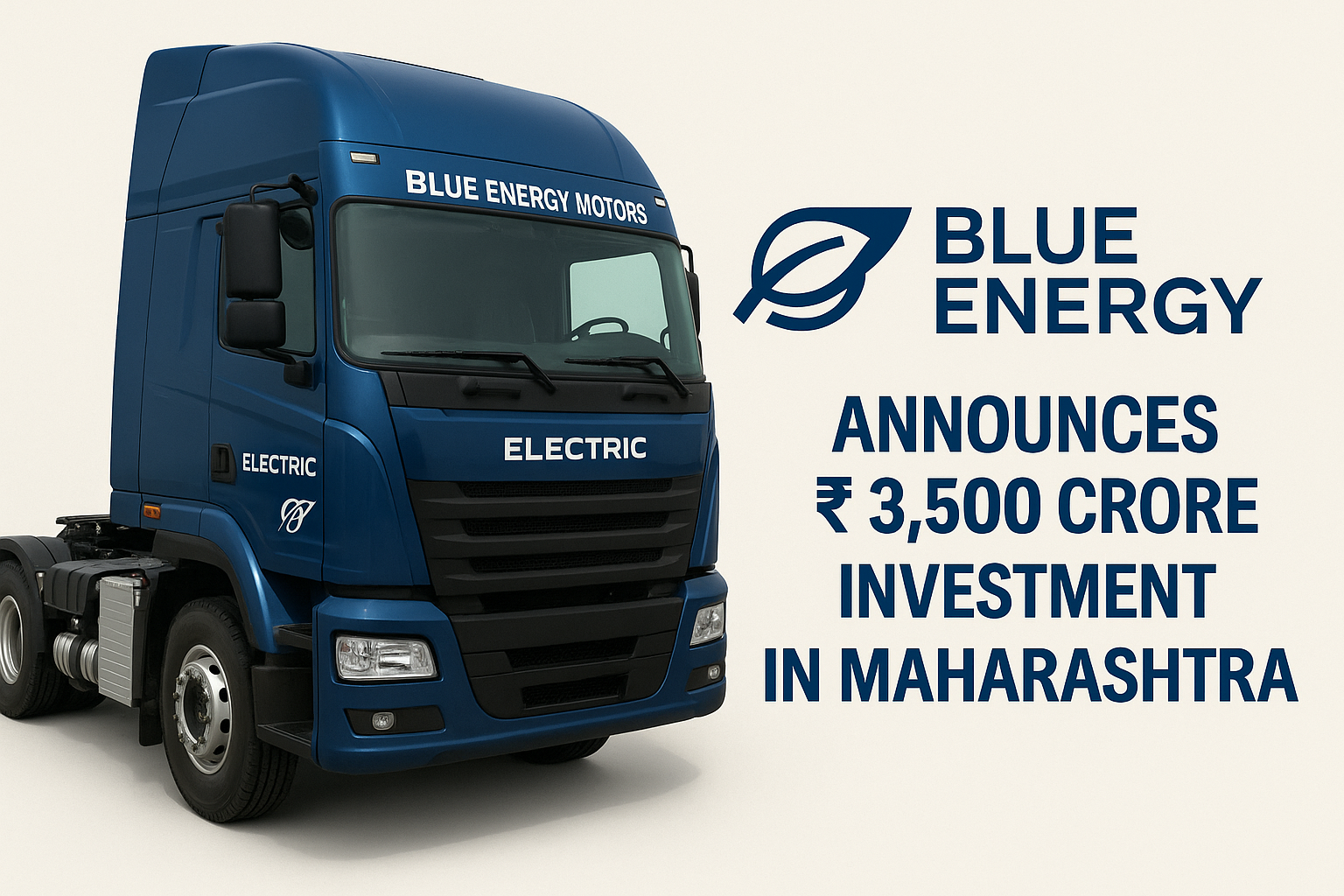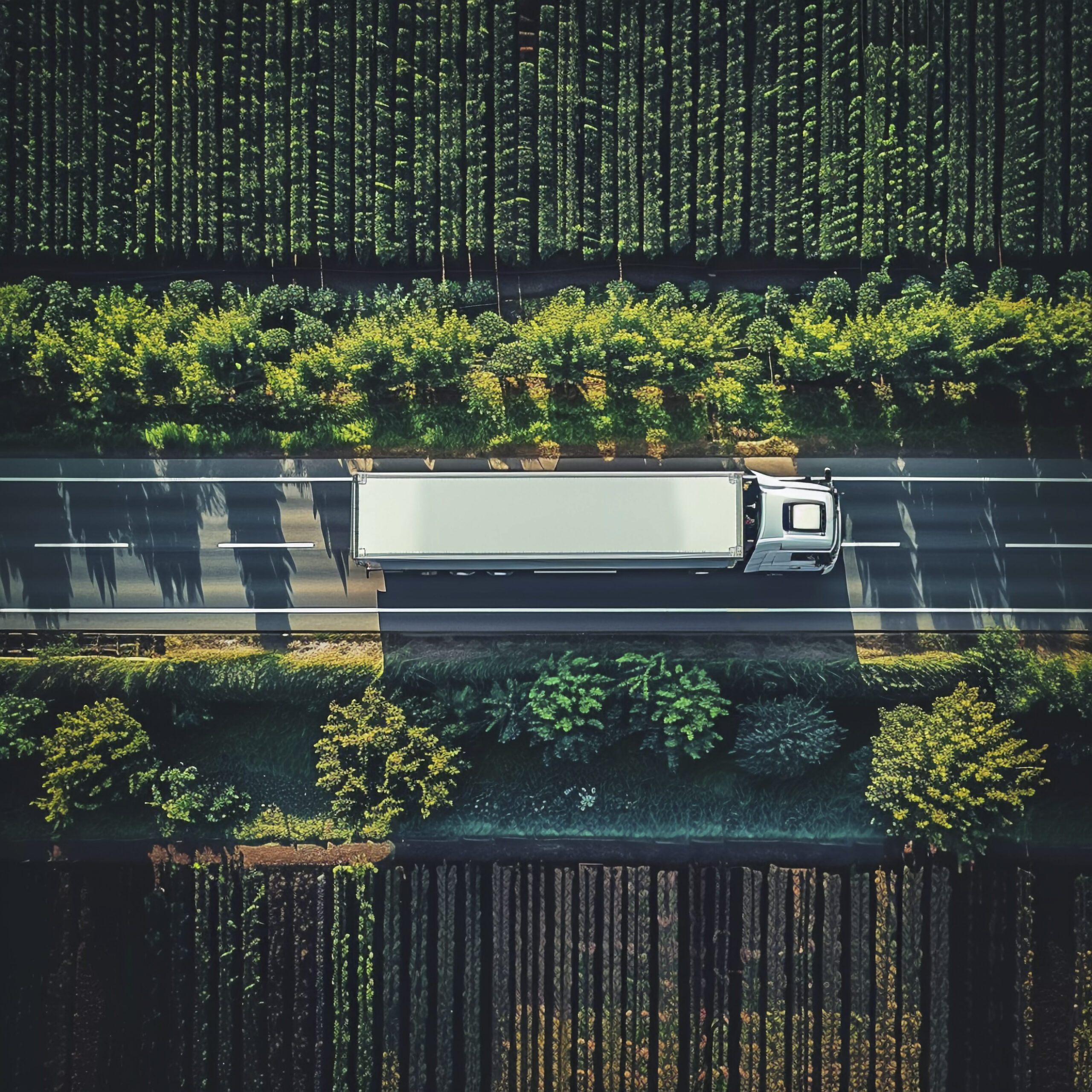In a major boost to India’s clean mobility and green logistics ecosystem, Blue Energy Motors Ltd (BEM), a pioneer in manufacturing LNG-powered and heavy electric trucks, has signed an initial agreement with the Government of Maharashtra to set up a new production facility with an annual capacity of 30,000 trucks. The project entails an investment of ₹3,500 crore, signaling one of the largest commitments in India’s commercial EV and alternative fuel vehicle sector.
The announcement coincided with the company’s rollout of India’s first heavy-duty electric truck featuring swappable battery technology and the inauguration of the Mumbai–Pune Electric Corridor, a landmark step toward decarbonizing India’s freight movement.
A Landmark Moment for India’s Green Freight Future
The new project underscores Blue Energy Motors’ ambition to transform India’s heavy vehicle landscape through cleaner technologies, specifically Liquefied Natural Gas (LNG) and Battery-Electric Trucks designed for long-haul and high-load applications.
Speaking on the occasion, Anirudh Bhuwalka, Founder and Managing Director of Blue Energy Motors, said:
“Our target is to achieve cumulative sales of 30,000 heavy-duty electric and LNG-powered trucks over the next five years. We have already invested nearly USD 50 million in our existing plant and are committed to expanding capacity to meet India’s fast-growing demand for sustainable logistics.”
The Mumbai–Pune Electric Corridor, inaugurated by Maharashtra Chief Minister Devendra Fadnavis, marks India’s first dedicated electric highway for freight trucks. Describing the development as a “Tesla Moment” for Indian freight mobility, Fadnavis emphasized Maharashtra’s pioneering role in clean energy adoption and industrial innovation:
“This launch showcases Maharashtra’s leadership in sustainable innovation. The Made-in-India electric truck with battery swapping technology, alongside the Mumbai–Pune corridor, aligns perfectly with the vision of Atmanirbhar Bharat and a greener, self-reliant India.”
Building India’s First Electric Freight Network
The Mumbai–Pune corridor represents the first step toward a nationwide network of electric logistics highways. Over the next three years, Blue Energy Motors plans to electrify major national highway corridors, connecting key industrial and logistics hubs to enable seamless green freight transport.
According to Bhuwalka, the corridor demonstrates the company’s end-to-end approach, integrating vehicle manufacturing, charging and swapping infrastructure, and digital fleet management, to accelerate the transition to zero-emission logistics.
“The Mumbai–Pune route is our proof of concept. Within three years, we envision a pan-India network of electric corridors that make long-distance clean trucking both viable and profitable,” he added.
The battery-swapping model is expected to address one of the biggest pain points in heavy commercial electric vehicles, downtime due to long charging cycles. With standardized modular battery packs, trucks can swap discharged batteries within minutes, ensuring near-continuous fleet operations. This model also makes it easier for fleet operators to adopt Battery-as-a-Service (BaaS) models, reducing upfront costs.
A Proven Player in LNG Trucking
While the electric truck marks a new chapter, Blue Energy Motors is already a dominant player in the LNG heavy truck segment. The company currently commands over 60% market share in India’s green trucking space, with more than 1,000 LNG-powered trucks already operating on Indian highways.
These trucks, launched in September 2022, are powered by engines co-developed with FPT Industrial (part of the Iveco Group) and backed by Essar Group, one of India’s largest energy and infrastructure conglomerates.
Blue Energy’s LNG trucks are designed to offer lower carbon emissions, superior torque, and higher fuel efficiency compared to traditional diesel vehicles. With LNG distribution infrastructure expanding across key freight corridors, the segment is rapidly gaining traction as a transitional clean fuel option before full electrification.
Expanding Manufacturing Footprint: From Chakan to Maharashtra’s Next EV Hub
At present, Blue Energy Motors operates a state-of-the-art manufacturing facility in Chakan, Pune, with an annual production capacity of 10,000 trucks. The upcoming plant in Maharashtra, developed under the new government partnership, will triple production capacity to 30,000 units and serve as a national hub for both LNG and electric truck manufacturing.

The ₹3,500 crore investment will be deployed toward:
- Expansion of assembly lines for electric and LNG trucks
- Installation of battery swapping and high-voltage testing systems
- Development of a vendor ecosystem for localized EV components
- Establishment of R&D and testing centers for new powertrain technologies
This investment will also generate direct and indirect employment opportunities in Maharashtra, contributing to the state’s vision of becoming India’s leading EV manufacturing and export hub.
Essar and Iveco’s Global Support Strengthens Technological Backbone
Blue Energy Motors’ technology alliance with Essar Group and FPT Industrial provides a strong foundation for scaling operations.
Anshuman Ruia, Director at Essar, commented:
“This launch marks a milestone in India’s decarbonisation journey. It reinforces our commitment to advancing green mobility through cleaner energy, advanced technology, and sustainable infrastructure. Together, we are driving a shift toward a low-carbon, efficient, and resilient economy.”
The collaboration enables Blue Energy to combine Essar’s expertise in energy and logistics infrastructure with FPT’s advanced engine and drivetrain technologies, positioning the company as a fully integrated clean truck manufacturer capable of competing globally.
Also Read: India’s Renewable Energy Growth 2025 Surges 56%: A Massive Leap Toward 2030 Targets
Driving India’s Transition to Clean and Efficient Freight
Heavy commercial vehicles account for a significant portion of India’s freight emissions. Diesel trucks, though reliable, are increasingly under pressure to comply with tightening emission norms and rising operational costs. Blue Energy Motors’ approach, combining LNG as an immediate alternative and battery-electric as the long-term solution, presents a practical pathway to decarbonize the freight sector without compromising performance or profitability.
By leveraging its dual-technology portfolio, the company is creating a flexible ecosystem where fleet operators can choose between LNG and electric based on route profiles, payload, and infrastructure availability. This versatility makes Blue Energy Motors uniquely positioned to accelerate India’s clean freight transition.
Government Backing and Policy Alignment
The Maharashtra government’s support for Blue Energy’s expansion aligns with India’s broader National Electric Mobility Mission and the National Green Hydrogen and Biofuel policies, which emphasize industrial decarbonization and domestic manufacturing.
The project is also expected to qualify for various state-level EV incentives, including capital subsidies, stamp duty exemptions, electricity duty waivers, and SGST reimbursements, enhancing project viability.
Chief Minister Fadnavis reiterated the government’s commitment to creating an enabling policy environment for EV manufacturers, component suppliers, and energy providers:
“Maharashtra will continue to lead India’s green industrial revolution by enabling private sector investment in sustainable technologies.”
The Road Ahead: A Vision for Sustainable Logistics
With India’s freight demand projected to grow threefold by 2040, the transition to low-emission heavy transport is no longer optional, it is a necessity. Blue Energy Motors’ initiative combines infrastructure readiness, product innovation, and government partnership to create a replicable model for green logistics across India.
The company’s upcoming 30,000-unit plant and the operationalization of the Mumbai–Pune corridor will serve as catalysts for nationwide adoption of electric and LNG trucking. In parallel, Blue Energy is expected to expand its charging and LNG refueling networks, offering comprehensive support to fleet owners transitioning to cleaner technologies. The launch of India’s first heavy-duty electric truck with swappable batteries and the creation of the country’s first electric freight corridor signal a turning point in the nation’s journey toward carbon-neutral logistics.
With a bold ₹3,500 crore investment and strong backing from Essar Group, FPT Industrial, and the Government of Maharashtra, Blue Energy Motors is not just building trucks, it is building the foundation for India’s green freight future. By combining LNG and electric technologies, Blue Energy is bridging today’s needs with tomorrow’s sustainability goals, steering India firmly toward a cleaner, more efficient, and self-reliant transport ecosystem.
Reference: The Economic Times
